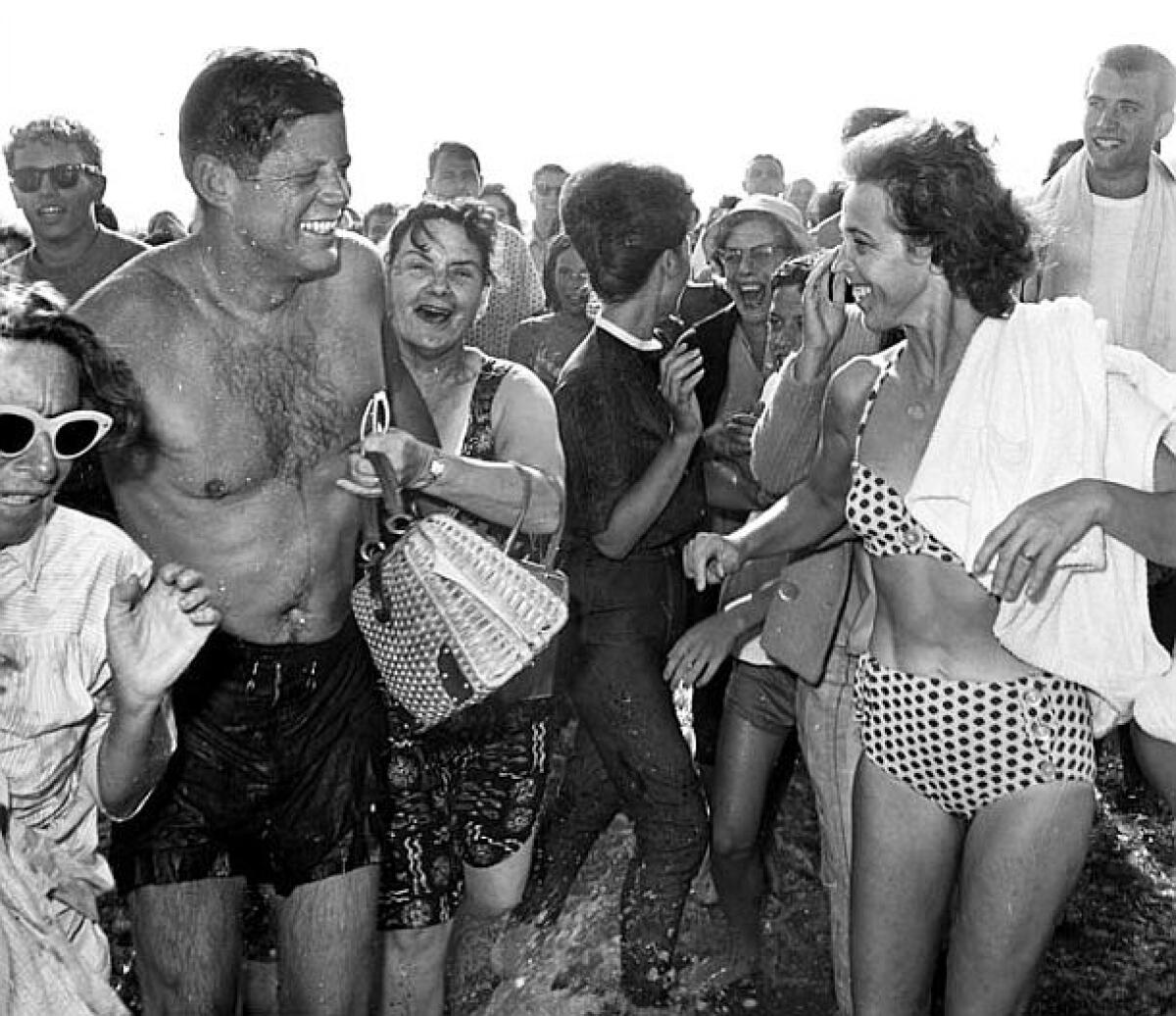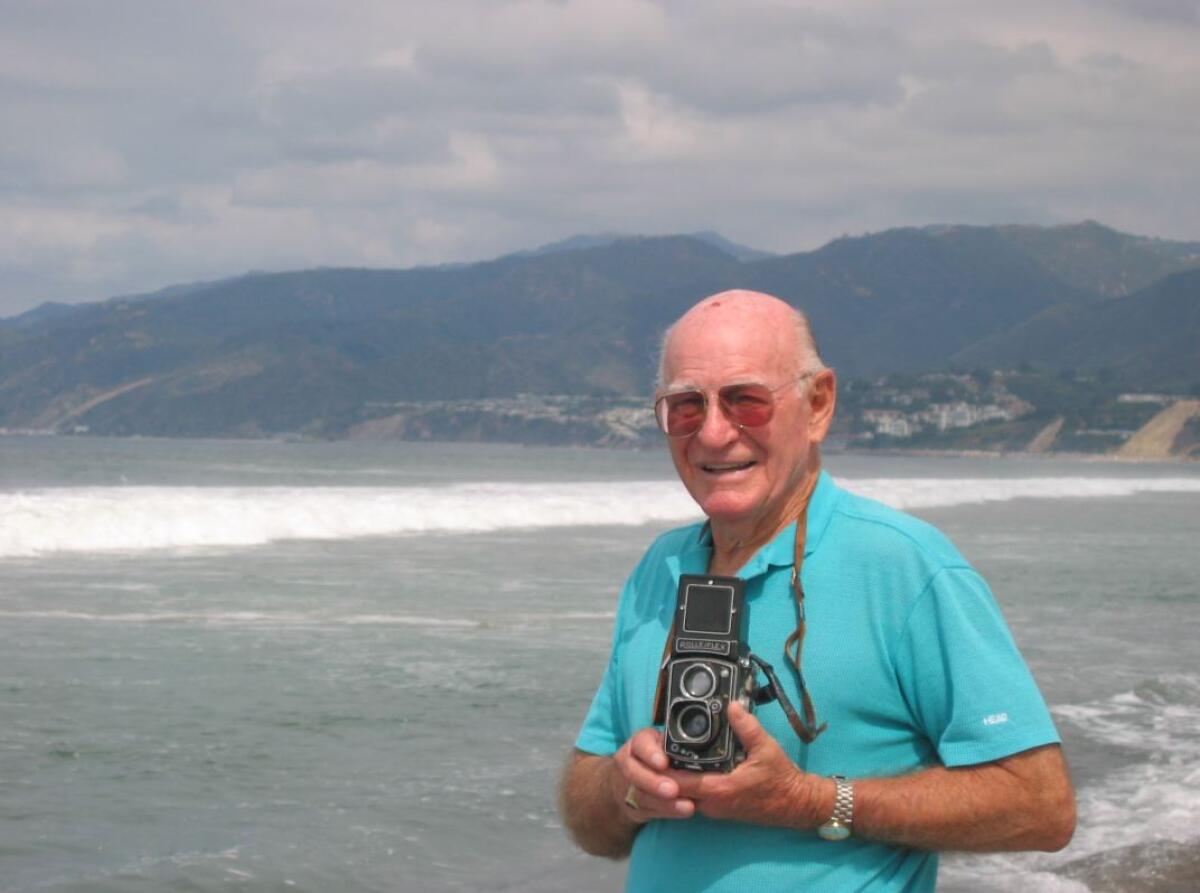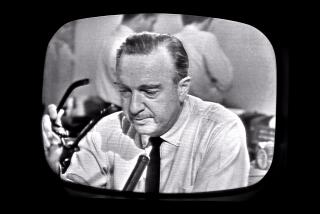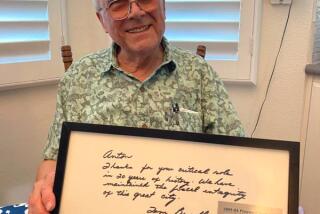L.A. Times photographer Bill Beebe, who waded into ocean to snap iconic JFK image, dies at 94

It was a hot Sunday in August 1962 when photographer Bill Beebe got a tip from volleyball players on a Santa Monica beach.
The president of the United States had ditched the Secret Service and was heading into the surf.
A staff photographer for the Los Angeles Times, Beebe raced to the oceanâs edge a mile north of the pier, where he found John F. Kennedy coming out of the water, as frantic Secret Service members struggled to contain gleeful and stunned admirers, who rushed to touch and talk with the president.
Beebe splashed into the water with his high-end German camera, a Rolleiflex, and a strobe with a 510-volt battery, to snap one of the most iconic shots of the Kennedy presidency.
The photo ran worldwide and provided a glimpse of an unusually accessible president somewhat cavalier about his safety, 15 months before he would be assassinated in an open limo by a sniper in Dallas.
It would become the crowning achievement of a long career in Southern California papers for Beebe, who died Oct. 24 at his home in Santa Monica at 94.
Beebe was born in Los Angeles and moved to Santa Monica with his family as a child. Before finishing high school, he enlisted in the Navy. In 1946, he was one of the first students to major in photography at what then was Santa Monica City College.
A member of the Press Photographers Assn. of Greater Los Angeles for more than 60 years, Beebe worked for the Los Angeles Mirror, The Times and the Santa Monica Evening Outlook.
Friends recall that he was an avid outdoorsman, and an environmentalist well before the term was invented, devoting countless time to documenting and protecting the Ballona Wetlands.
His long career included photos of Babe Ruth and gangster Mickey Cohen. Beebe retained the rights to the images he produced while working for the Evening Outlook; when the paper closed in 1998, he donated his collection of more than 100,000 negatives to the Santa Monica History Museum.
But nothing would top the Kennedy photo, taken near Lifeguard Tower 6, some 150 yards from what at the time was dubbed the âWestern White House,â the large beachside palace of Kennedyâs brother-in-law, actor Peter Lawford.
âIn 1962, that stretch of beach was the center of the universe,â said Arthur Verge, a history professor at El Camino College. âIt was the haunt of Old Hollywood coming together with the political stars of the time.â

Verge says it was where the short surfboard was invented, so that a studio mogulâs daughter could better handle the pounding surf.
Marilyn Monroe, Frank Sinatra and the Rat Pack (including Lawford) partied along the mile-and-a-quarter neighborhood, bouncing among sprawling beach homes owned, at various times, by studio chiefs Darryl F. Zanuck, Harry Warner and the Goldwyn family.
The three-level homes opened right onto the sand, to a particularly wide stretch of beach, just north of what is now the Jonathan Club, at the base of the California Incline off Pacific Coast Highway.
At the Western White House, Kennedy would invite reporters in to chat, but take questions only from the major L.A. papers â The Times and the Herald Examiner.
âMr. President, what do you have against small-town papers?â asked Beebe, who was also stringing for the Santa Monica paper at the time.
The president got a laugh out of the question from Beebe, who like the president, was an ex-Navy man.
Days later, when he spotted Beebe standing in the waves, his expensive Rolleiflex dripping with saltwater, he smiled in recognition.
And Beebe had his historic shot.
Beebe is survived by his wife of 71 years, Sonya; daughter Suzann Gilliland Peterson; son Bill Beebe; grandson Brett Beebe and granddaughter Krista Beebe.
More to Read
Start your day right
Sign up for Essential California for the L.A. Times biggest news, features and recommendations in your inbox six days a week.
You may occasionally receive promotional content from the Los Angeles Times.






